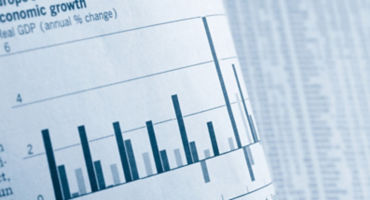How could AI transform the macro backdrop?
Generative AI technologies offer the promise of human-like output, with high usability thanks to natural language and a wide range of potential applications.
If successfully implemented, AI-driven automation could boost productivity growth by improving efficiency and freeing up resources for more productive tasks. Such an outcome would be welcome in a world where one of the most prevalent market themes over the past decade has been the fear of secular stagnation, where trend growth and R* (the real interest rate when economies operate at full potential) so low that interest rates cannot fall far enough to stimulate investment.
How big could the macro impact be?
The lack of data makes it incredibly hard to predict the likely macro impact of AI. Some academic studies (Figure 1) have attempted to do so based on a bottom-up breakdown of automation potential by sector and the speed of adoption of past technological advances. Understandably, the range of estimates about the potential boost to productivity are large and depend on assumptions about the level of task automation, associated structural worker displacement and timeline of adoption.
In summary, these studies estimate that productivity growth could be raised by anywhere between 0.5% and 7%. If we take the average across the seven studies, the estimated boost to productivity is as much as 2.5%, while potential trend growth — inferred from the share of labour in production — could increase between 0.1% and 2%, with an average of 1%. Those estimates are very large.













Financial Market Review
A monthly update on equity, fixed income, currency, and commodity markets.
By
Brett Hinds
Jameson Dunn